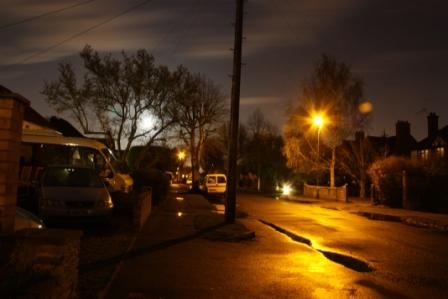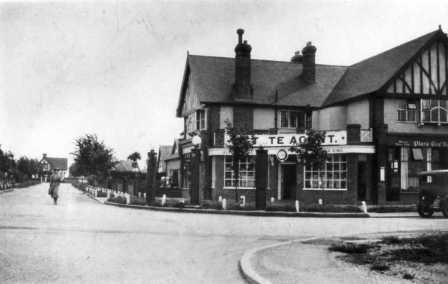
|

|

|

|

|

|

|

|

|

|
Richings Park today ...

Richings Park at Night
This company had carried out a smaller development in Burnage on the Stockport side of Manchester between the A34 and A6 prior to 1922 when the Sykes purchased Richings Park. In 1928 the company set up its own brickworks at Charfield, Gloucestershire (on the Bristol - Gloucester railway Line and B4058 by Wotten-under-edge).

Petrol Pumps
It traded as Phormium Co. with Eric Sykes as general Manager. Mr Roberts was called upon to negotiate the contract between the Phormium Company and the GWR for the aerial conveyor which crossed the tracks between the clay pit and the works. The kiln was first fired in 1929 and
produced Clare's patent brick pots, although it is not certain that the "pots" used in building Richings Park were fired here as many of the houses were built before this. After the crash of 1931, the same brickworks under new owners, Messrs G.H.Downing, had a further 30 years of active life and the Phormium Company Ltd finally ceased to be in 1961.
Richings Park companies
The Sykes development in Richings Park was initially a private enterprise in their own names. The initial capital was raised by selling two of the estate farms to the existing tenants but In order to fund further development, Eric Sykes took out mortgages with Barclays Bank dated 29 Jan 1925 and 10 Jul 1926, having convinced the bank that a garden village based on the fashionable Letchworth model was a good investment, particularly one based on a rapid construction method
which could keep the costs down and make the houses attractive to purchasers. Certain plots were specifically excluded from these mortgages as they had already been sold and houses built or in the process of. These included those presently numbered 2, 4, 6, 8, 10, 12, 14 and 16 Somerset Way and 17, 19, 21, 23, 25, 6 and 8 Wellesley Avenue.
As the confidence of the Sykes brothers grew so too did their plans for the estate. They convinced the Great Western Railway that a new commuter station would be to their mutual advantage and this was duly opened on 1st December 1924. Even if Richings Park had reached its intended size the station would have remained on the edge, as it is now. Timetables from the time indicate that the service was better then than now! Thereafter, the railway also promoted the Estate in its company magazine; it had already previously provided a bus service from West Drayton.

